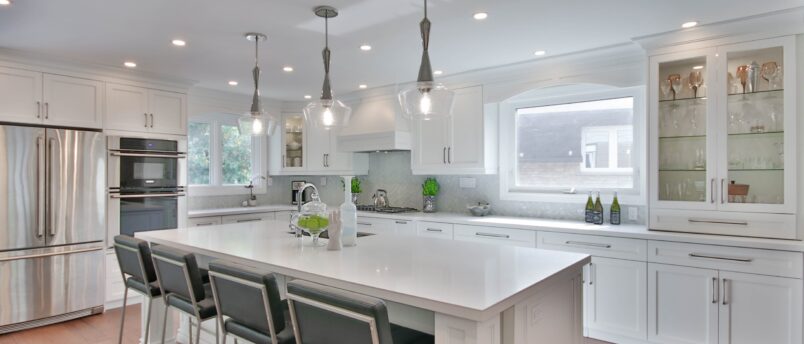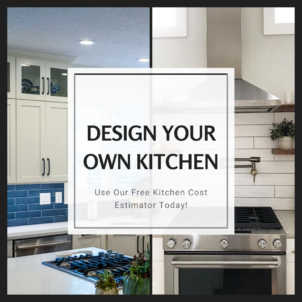
Are you in the market for a new kitchen? If so, you're probably trying to figure out where to start. A kitchen remodeling project can be daunting, but it doesn't have to be. This article will outline the steps you need to take to do a major kitchen remodel. We'll also discuss the order of those steps and why it's important to follow them in that particular order. So whether you're planning on hiring a professional for your kitchen remodeling project or doing the work yourself, read on for some helpful advice!
Make a Plan
The first step in any kitchen remodel is to plan. You need to decide what you want your new kitchen to look like. Do you want to change the layout? Get new appliances? Expand the space or get new kitchen cabinets and cabinet hardware? Install countertops and new flooring? Once you have a vision for your new kitchen, you can start making a budget and timeline for the project.
Make a Budget...And Stick to It
During this time, you'll want to create a remodeling budget. This should be the driving force behind your decisions throughout the entire process. It's tempting to want to scrimp on paying for good labor so you can buy fancier materials, but don't make that mistake with your remodel.
Also, it's far too easy to get deep into a remodel and start losing track of finances if you aren't keeping track of what you've spent. There are literally thousands of moving parts in a typical kitchen remodel, especially if you do a major kitchen remodel, so make sure you hang on to your receipts, keep an eye on your bank statements, and be diligent about tracking. Yes, it will get extremely annoying, especially if you're not someone who typically budgets, but trust us, you'll want to have a firm grasp on your spending.
This will be important if you do a DIY kitchen remodel because you won't have an experienced remodeling contractor to guide you. You might get so carried away with creating your dream kitchen that you start justifying overly expensive and unnecessary purchases throughout the remodeling project. Superfluous purchases can add up very quickly during a DIY kitchen remodel.
Demo Time!
Next, you'll need to demo the old kitchen. This step can be messy and time-consuming, but it's also super exciting because it marks the tangible beginning of your remodel. Plus, it's necessary to create your new space. When you demo, be sure to take care of any utility work that needs to be done (like relocating gas lines or electrical outlets).
Plumbing and Electrical
Once the demo is complete, it's time to start on the rough plumbing and electrical work. This is typically done by a professional, but if you're experienced in this area, you may be able to do it yourself. Just be sure to get all the necessary permits before starting any work.
This is where your plan will come in handy. In order to run gas and water lines and electrical wiring, you have to know where your appliances, sink, switches, and light fixtures will go. So, before you have the plumber and electrician come out, make sure you have the layout pretty nailed down. If you hire a professional contractor to do your remodel, you won't really have to worry about this because they'll certainly have subcontractors that they work with every day come in and do the work when it's time.
Build Your Base
After the plumbing and electrical work are complete, you can start working on the actual construction of your new kitchen. This includes framing, drywall, painting, and flooring. If you're doing any major changes to the layout of your kitchen (like moving walls or adding new windows), this is also the time to do that.
This will probably take the most time of anything because your contractor wants to get dimensions right, make sure everything will be functional, and create a solid foundation to build the rest of your kitchen so it will last for decades to come.
Choose Your Finishes
Once the construction is finished, you can move on to the fun part: choosing new cabinets, cabinet hardware, lighting fixtures, plumbing fixtures, countertops, wall surfaces, and appliances! This is where your vision for the space will really come together. Take your time choosing each element, and be sure to get quotes from multiple vendors so you can find the best deal.
It's easy to get overwhelmed by all the options and pricing, so lean on your contractor for suggestions and assistance. They work in kitchens every single day, so they will have a good idea about what works and what doesn't. Some contractors, like Portland's RUPP Family Builders, have on-staff interior designers who can help you bring your kitchen vision to life. If you know what you want but don't know how to get there, an interior designer can be a tremendous asset during the planning and designing process.
Put It All Together!
Finally, it's time to take your plan and kitchen design ideas and put them all together. Your contractor will work with you to schedule different subcontractors (plumbers, electricians, tile setters, etc.) so they can come in and do their job. This is when you actually install countertops, cabinets, flooring, and appliances like your fridge, stove, and microwave oven. If you're doing some of the work yourself, this is also when you'll tackle things like painting, installing new light fixtures, or putting up backsplash tile.
Ready To Start Your Kitchen Remodeling Project?
And that's it! By following these steps, you can ensure that your kitchen remodel goes smoothly and according to plan. Remember, the most important thing is to take your time and enjoy the process!
If you want someone to be there and guide you throughout the process, consider RUPP Family Builders for your kitchen remodel. To get started, use their free online kitchen remodel estimator tool to determine how far your budget can get you!

Ready to Design Your Kitchen?